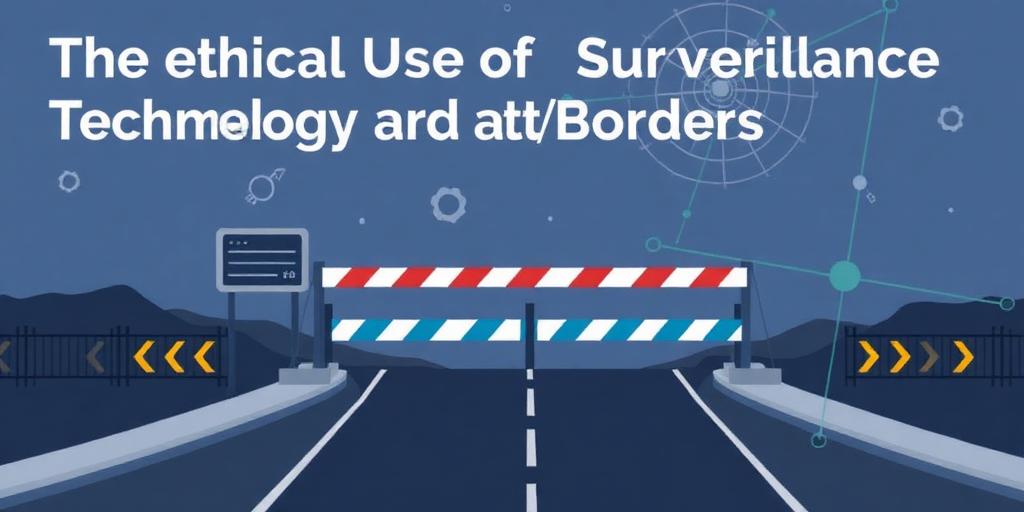The Ethical Use of Surveillance Technology at Borders
Border security is a critical issue for nations worldwide. As governments strive to maintain control over their borders, they are increasingly turning to advanced surveillance technologies. These tools, ranging from sophisticated sensors to artificial intelligence (AI)-powered analytics, offer unprecedented capabilities for monitoring and managing the movement of people and goods. However, the use of these technologies raises significant ethical concerns that must be carefully considered.
The Rise of Surveillance Technology
Over the past few decades, surveillance technology has become an integral part of border management. Technologies commonly deployed include:
- Advanced Sensors: These include thermal cameras, radar systems, and seismic sensors capable of detecting movement across vast distances.
- Drones and Aerial Surveillance: Unmanned aerial vehicles (UAVs) equipped with high-resolution cameras provide real-time surveillance of border areas.
- Facial Recognition: AI-driven systems that can identify individuals from video footage, matching them against watchlists.
- Data Analytics: Software that analyzes large datasets to identify patterns and anomalies that may indicate illegal activities.
These technologies offer numerous benefits, such as improved detection of illegal crossings, enhanced security, and more efficient resource allocation. However, their implementation is not without ethical challenges.
Ethical Considerations
Privacy Rights
One of the primary ethical concerns is the impact on individual privacy. Mass surveillance can capture data on innocent individuals who are simply crossing the border legally. The collection, storage, and use of this data raise questions about the right to privacy and the potential for misuse. It is essential to implement robust data protection measures to safeguard personal information.
Bias and Discrimination
AI-driven surveillance systems are only as unbiased as the data they are trained on. If the training data reflects existing societal biases, the system may perpetuate and even amplify discriminatory practices. For example, facial recognition technology has been shown to be less accurate in identifying individuals from certain racial groups, leading to potential misidentification and unjust treatment.
Transparency and Accountability
Transparency is crucial to maintaining public trust. The public should be informed about the types of surveillance technologies being used, how they are being deployed, and what measures are in place to prevent abuse. Additionally, there must be clear lines of accountability for those operating these systems.
Human Dignity
Surveillance should not be conducted in a way that dehumanizes or disrespects individuals. The use of technology should not lead to the mistreatment or harassment of migrants and asylum seekers. Border authorities must ensure that their actions are consistent with human rights principles.
Balancing Security and Ethics
To ensure the ethical use of surveillance technology at borders, several steps can be taken:
- Establish Clear Legal Frameworks: Laws and regulations should clearly define the scope and limits of surveillance activities, ensuring that they are proportionate and necessary.
- Implement Data Protection Measures: Strong data encryption, access controls, and retention policies are essential to protect personal information.
- Ensure Independent Oversight: Independent bodies should be established to oversee surveillance activities and investigate complaints of abuse.
- Promote Transparency: The public should be informed about surveillance policies and practices.
- Invest in Bias Mitigation: Efforts should be made to identify and mitigate biases in AI systems.
Conclusion
Surveillance technology offers significant potential for enhancing border security, but its use must be guided by ethical principles. By carefully considering the impact on privacy, bias, transparency, and human dignity, governments can harness the benefits of these technologies while upholding fundamental rights. A balanced approach that prioritizes both security and ethics is essential to maintaining public trust and ensuring that border management practices are fair and just.









